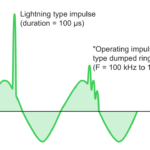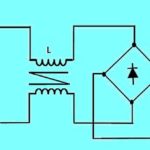Part 1 of this FAQ explained fuse basics. Although fuses are simple in principle, selecting the most suitable fuse for the application is more complicated than it may seem initially.
Q: What are the key questions to ask when selecting a fuse?
A: These are just a few of the considerations:
- What is the normal operating current of the system or circuit?
- At what excess current should the fuse open the circuit?
- For what time period (minimum and maximum) is excess current allowed?
- What voltage of the circuit in which the fuse operates
- What is the expected ambient temperature where the fuse is located?
- Is this circuit a pulse circuit or a steady-state current circuit?
- Are there any industry or regulatory mandates which apply in this application?
- What are the physical size restrictions?
- What are the physical-access requirements?
Q: What are the major classes of fuse-response speed?
A: There are three:
- Fast-acting fuses are designed to blow rapidly at very slight percentages of overload. For example, they will open the circuit at a 200% overload within a maximum of 5 seconds; the greater the overload, the more rapidly the circuit opens.
- Medium-lag fuses are widely used in automotive, commercial, industrial electronic equipment, and appliances. Typically, they can handle 110% of rated current for a minimum of four hours. Also, the fuse will blow in less than an hour with an overload of 135% of rating and 30 seconds with an overload of 200% of nominal rating.
- Slow-blow fuses can typically carry 110% of the rating for a minimum of four hours, open the circuit at 135% within one hour, have a minimum of 5-second delay at 200% of rating, and open the circuit within 2 minutes. They are used with large inactive loads such as motors, which have a high start-up current as part of the normal operation, and it would be highly unacceptable for the fuse to blow every time the motor started.
Slow-blow fuses are sometimes used in series with a fast-acting fuse at 5× to 10× the nominal rating to provide fast protection against severe overloads such as a complete short circuit across a high-capacity source such as the AC line or a battery stack (think of electric vehicles).
Q: What do some of the current versus time graphs look like?
A: While each vendor’s graphs are somewhat similar, they also have different levels of detail. Figure 1 shows a fuse family, which is characterized by both a graph and a table.

Q: What about fuse performance in pulsed circuits?
A: This can be the most challenging area for fuse selection. The first question is about system tolerance: is it peak-pulse value, or is it an integrated pulse × time consideration? The fuse integrates the current and its thermal effects, so a fuse for a fast, brief, high-current pulse is different in construction and action than one for longer but lower-current pulse situations.
Q: Are there other important fuse parameters?
A: Of course! They include, but are not limited to, these:
- Arcing time: the time between the fuse cutting off the current extinguishing any arc (only an issue for high-voltage fuses or DC, since AC arcs self-extinguish when the current reverses).
- Breaking capacity: the maximum current the fuse can interrupt; as with any conductor, there is a maximum operating limit.
- Voltage drop: there is an IR drop across the fuse resistance; if the fuse had zero resistance, there would be no voltage drop and also no I2R power dissipation to result in the heating and melting of the element.
Q: To what extent are fuses standardized?
A: Almost every factor related to fuses is standardized, especially when personal and safety issues are involved. There are CIE, UL, CSA, ANSI, British Standard, and other standards for setting up, running, and characterizing fuse tests under carefully defined circumstances, as well as certifying them.
There are also standard packages for the many fuses on the market. As a result, there is an opportunity for using multiple sources, at least in principle – although second-tier specifications must be checked and assessed. Also, note that low-voltage, low-current fuses in non-critical applications, such as those that protect a small-signal connector against incorrect attachment, are often not standard but may be proprietary components.
Reference:
https://www.slideshare.net/princechawla391/fuses-and-mcb







[…] Part 2 of this FAQ will look at operating parameters and specifications of fuses in more detail. […]